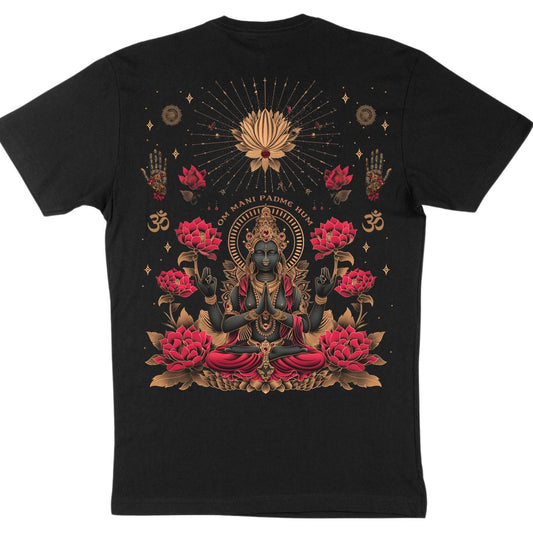-
Chenrezig Buddhist Consciousness Research Support | Compassion Studies
Regular price $34.00 USDRegular priceUnit price / per$40.00 USDSale price $34.00 USDSale -
Eternal Being | Esoteric Apparel | Embroidered Soft Sweatshirt
Regular price $59.00 USDRegular priceUnit price / per$71.00 USDSale price $59.00 USDSale -
Four Sights of the Buddha Sweatshirt | Premium Soft Sweatshirt
Regular price $59.00 USDRegular priceUnit price / per$71.00 USDSale price $59.00 USDSale -
Plant Life Cycle Sweatshirt | Premium soft sweatshirt
Regular price $59.00 USDRegular priceUnit price / per$71.00 USDSale price $59.00 USDSale -
The Four Sights Tshirt
Regular price $30.00 USDRegular priceUnit price / per$36.00 USDSale price $30.00 USDSale
Collection: Support Buddhism Research | Consciousness Studies | Thalira
Buddhism Clothing - Enlightenment in Style
Exploring Buddhism's Teachings Through Fashion
Sacred Symbols in Modern Wear
Our apparel features sacred symbols and designs, including our popular Chenrezig Tibetan Buddhism shirt, embodying the principles of compassion and liberation. These designs are not just fashion statements but are meant to remind you of the teachings of Buddha, whether you're practicing meditation or navigating your daily life.
From Ancient to Contemporary
We've taken inspiration from various Buddhist traditions, adapting them into garments that are suitable for the modern individual. Whether it's through our comfortable t-shirts or our uniquely styled hoodies, each item tells a story of enlightenment and peace. Learn more about how these clothes can support your spiritual journey with insights from Eastern Philosophy.
Mindful Fashion for the Modern Practitioner
A Revolution in Mindful Living
Our clothing is designed to inspire a mindful lifestyle. Every piece, from our sacred symbolism to our Buddhist-inspired designs, encourages a deeper connection with your practice.
Community and Learning
Engage with a broader community through our esoteric blog, where we explore spiritual teachings and practical wisdom. Our collection also includes items that can pair well with your spiritual practice, like Sacred Geometry clothes and Astrology and Divination themed wear.
Collection Highlights:
- Clothing inspired by ancient Buddhist wisdom and symbols
- Comfortable, everyday wear suitable for meditation or daily life
- Integration of sacred symbols and spiritual teachings
- Support for spiritual exploration through fashion
- Free shipping on all orders





